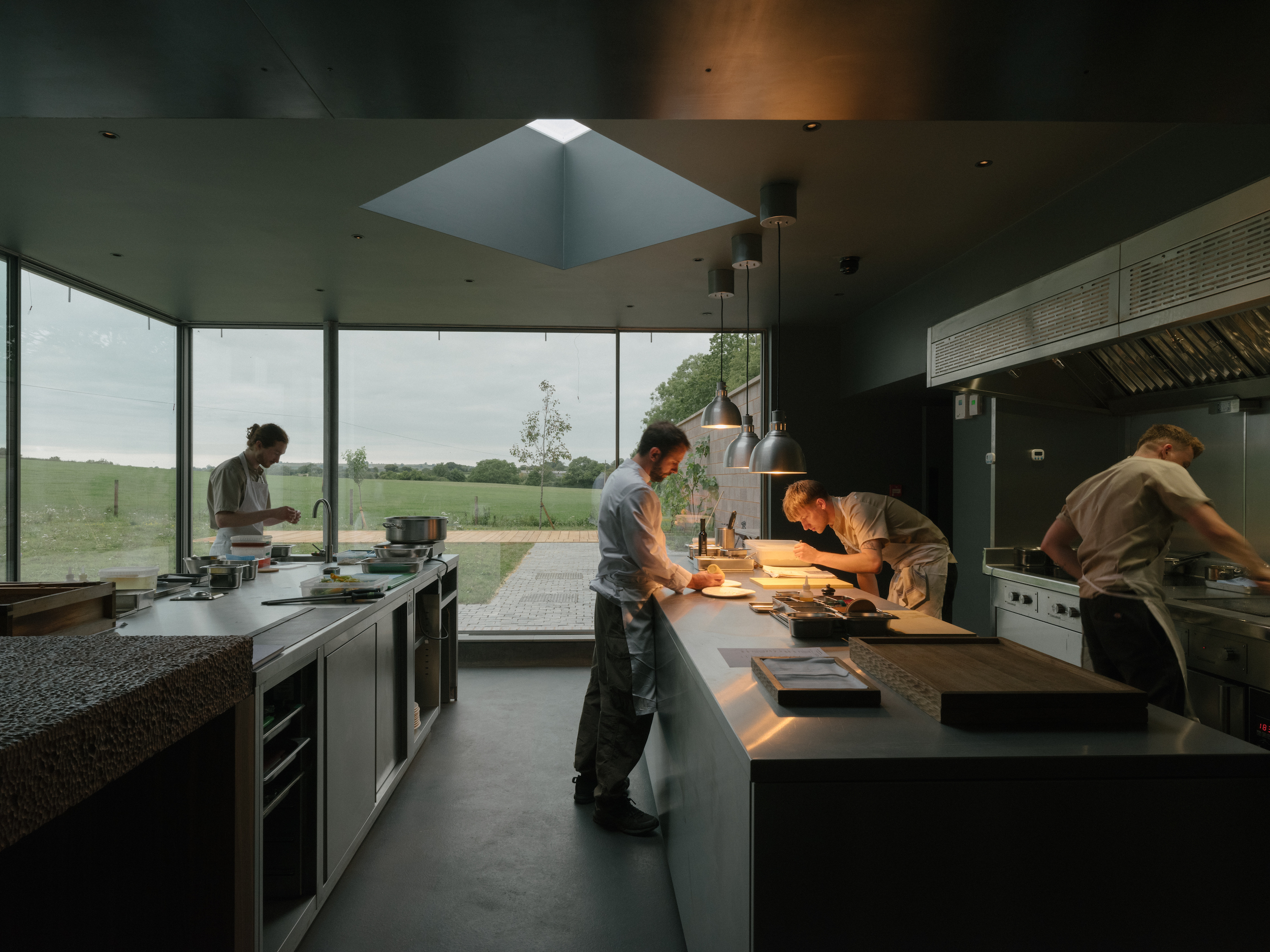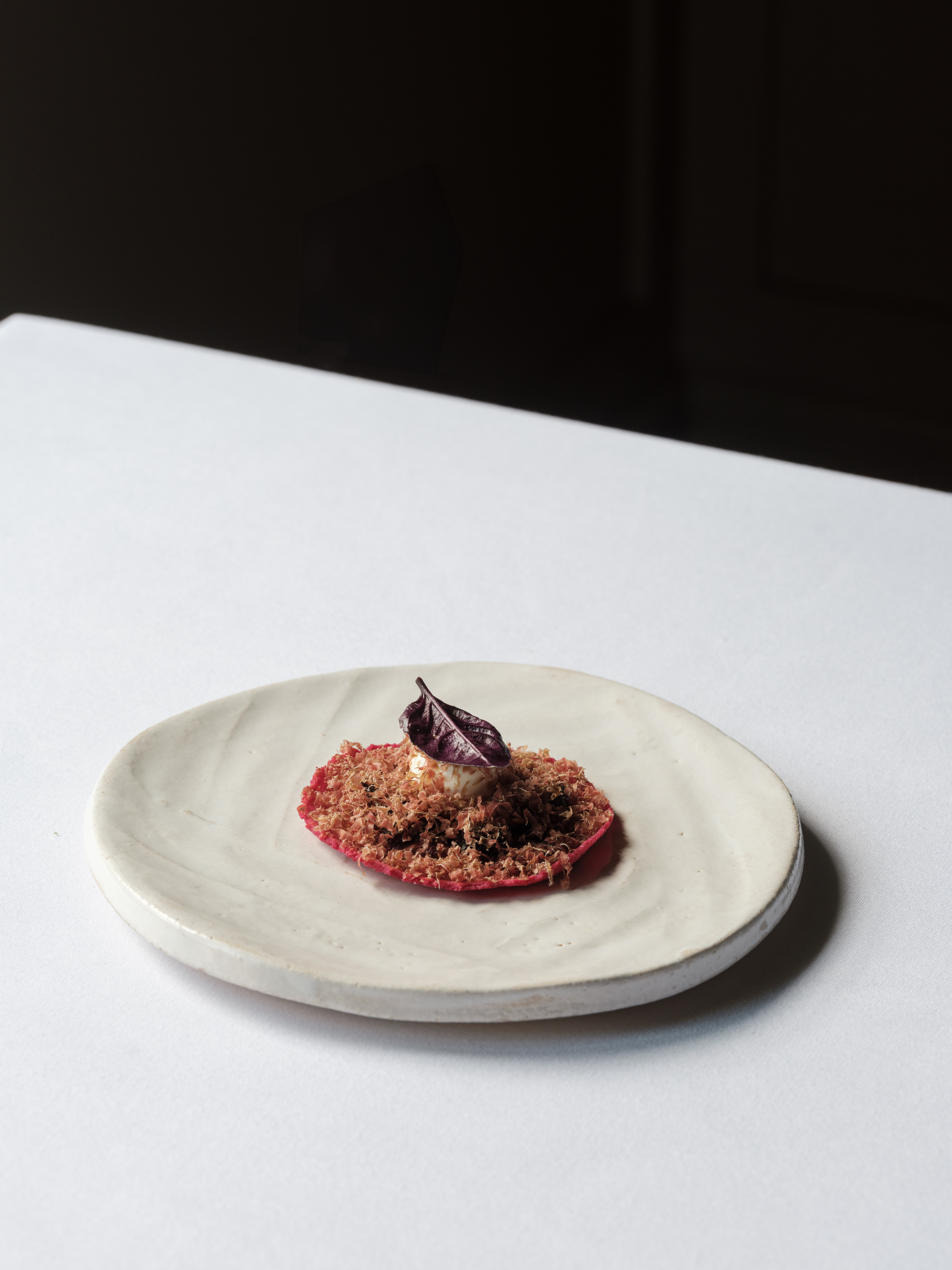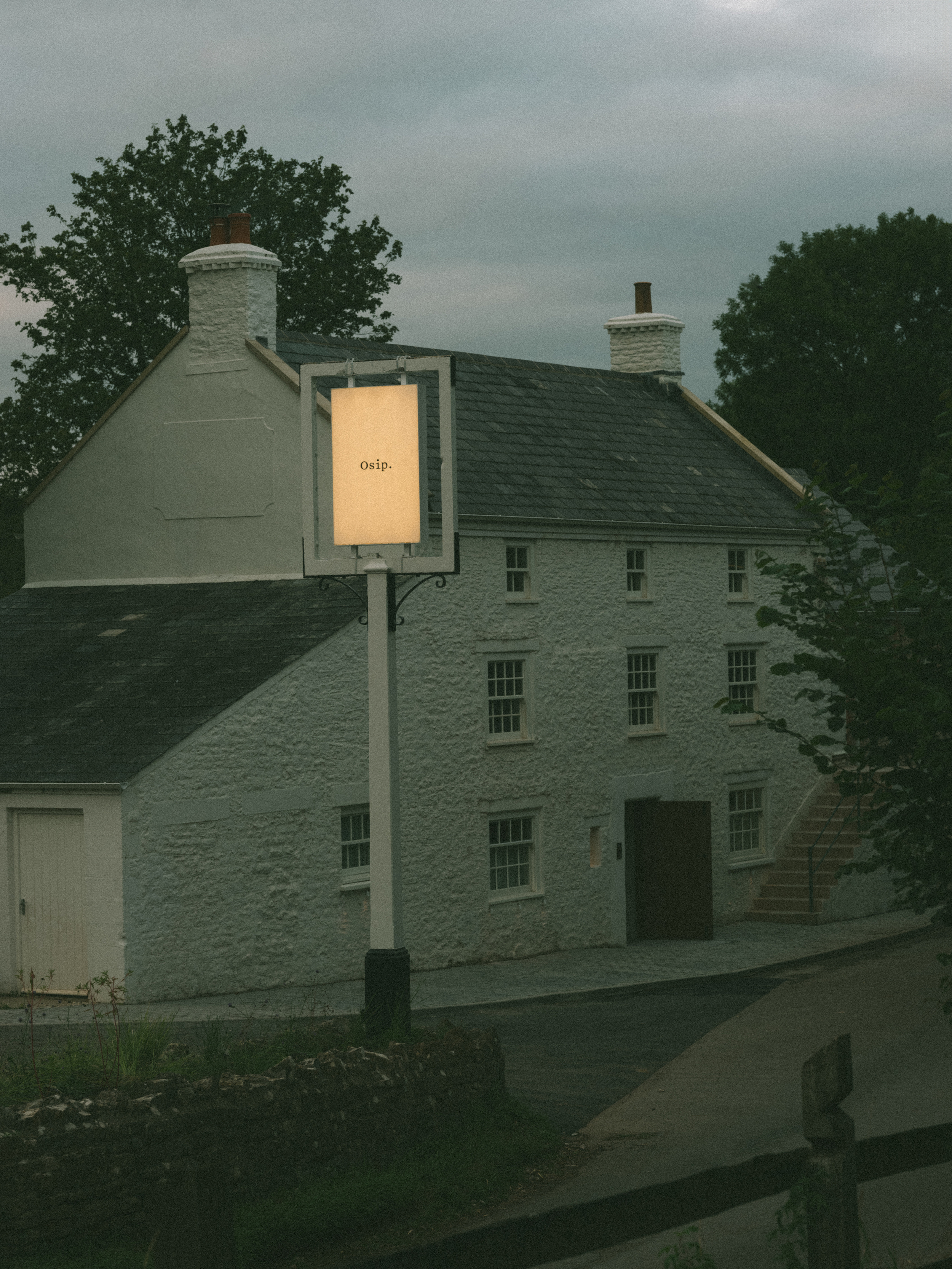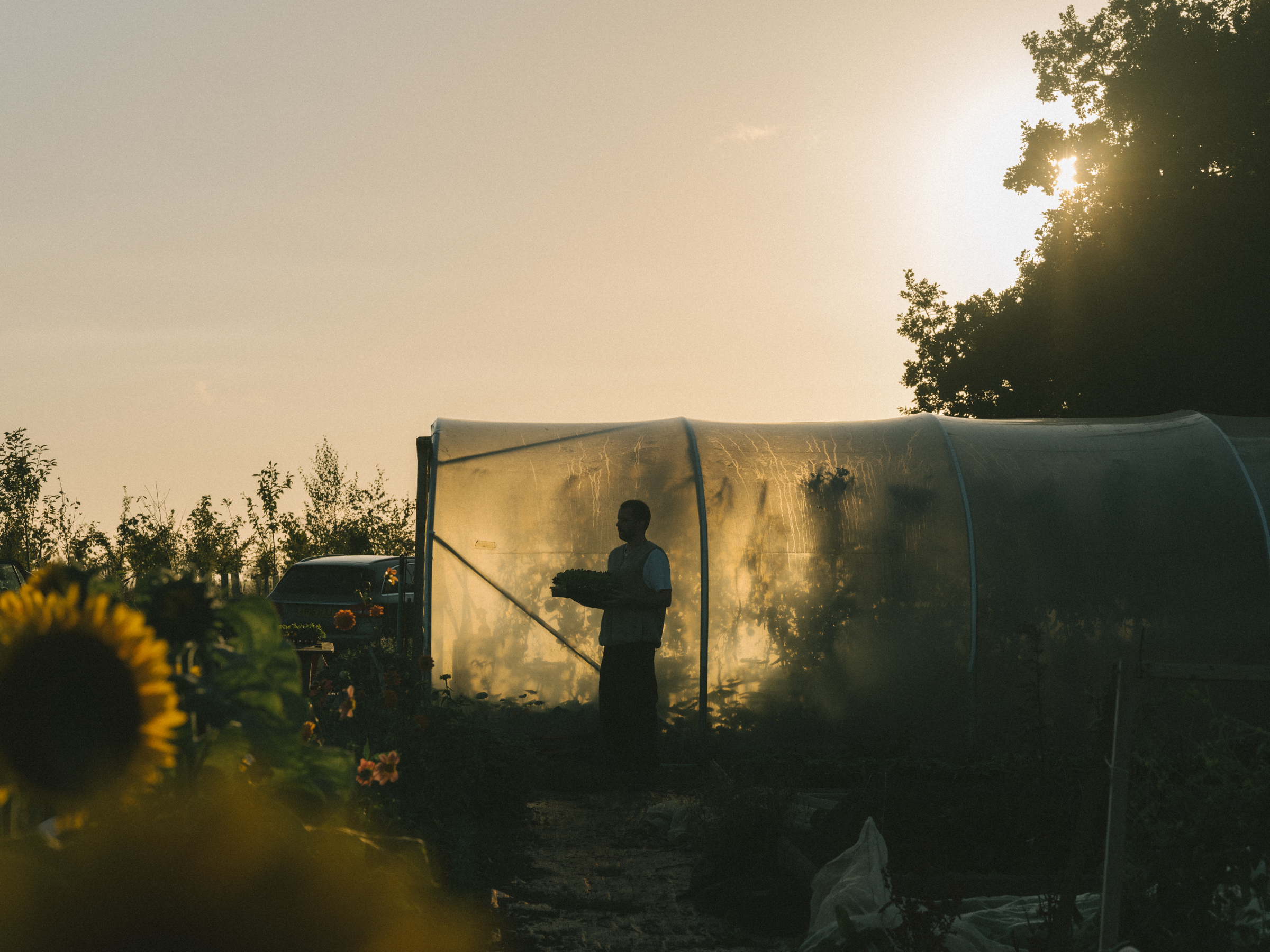Back to the land: In Osip v.2, chef Merlin Labron-Johnson has defined the farm-to-table model for years to come
With a new location, Somerset's Osip is reimagined as a 'contemporary auberge' with the same focus on homegrown produce and minimal waste

Nestled into a fold of rolling Somerset countryside, a few miles from the art-gasto hotbed of Bruton, Osip v.2 – the feverishly anticipated new opening from chef Merlin Labron-Johnson – is a consummate place to take in the late changing seasons. It’s one of those crunchy autumn days; mizzle descending, wafts of fragrant woodsmoke curling from an alfresco cast-iron burner outside a handsome whitewashed old pile, bustling activity and twinkling lights within. An achingly winsome scene, even without the giddy epicurean context.
But giddy it is. Osip v.2 is the definitive phase of a project that began on Bruton’s high street in 2019. A tiny, design-mag bolthole with a lyrical Modern British menu in thrall to the seasons and bounties of the surrounding area, Osip v.1 quickly became a lynchpin for the field-to-plate boom and a vehicle for Labron-Johnson’s rising star (he made his name at Portland and Clipstone in London, before decamping to the sticks).
Having outgrown its roots, sights were set on a new base in this 17th-century coaching inn, previously owned by Hauser & Wirth. The move sees Osip v.2 reimagined as a kind of ‘contemporary auberge’: the Gallic farmhouse-restaurants seeing a revival in places like Bertrand Grébaut’s D’une île in Brittany and Thomas Benady’s Auberge Sauvage in Normandy. 'The site felt perfect,' explains Labron-Johnson. 'It feels like it's in the middle of nowhere, but still accessible, surrounded by fields and at the foot of a beautiful pine forest. But having it close to Bruton was also really important.'

The building, gleaming in washed white lime, has been overhauled by Bruton-based architects Bindloss Dawes: its once insular aspect opened up to the garden (replete with Japanese-style teahouse) and fields beyond, by way of a modernist extension with trailing vegetation and huge slim-framed windows between the steel-topped pass and the restaurant grounds (which, by summer, should have become a technicolour wildflower meadow). It’s not an industrial kitchen garden by any means – just asparagus and herbs thus far – but Labron-Johnson hopes to install a nursery next year, to propagate plants before digging them in to the fields.

Inside, the firm’s ascetic, naturalistic restoration is more cultivated still. It’s a blank canvas of sorts: the traditional white alcoves, exposed beams and crimson earthenware floor – made from locally-sourced and acoustically absorbent earth – a stage for a raft of keenly curated furnishings. As with the food, provenance is all: whether modern ceramics from Anna Karin and Collette Woods, and horsehair upholstery by Castle Cary’s John Boyd; to a hand-carved, English walnut bar by Forest + Found studio, and a rotating bevy of artworks led by Christopher le Brun’s pacific abstracts.
'It's a lovely pub, but it's not listed, so we don't want to lose that character,' says Bindloss Dawes co-founder Oliver Bindloss of the refit. 'And it’s been fun using local makers to feed into the narrative of how the building is made. It's similar to how Merlin uses local ingredients in his food.' Taken collectively, the vibe is as akin to a gallery as it is a restaurant; a painterly vision that chimes with the provenance-driven, refined cookery that is Labron-Johnson’s MO.
A cool 85% of the produce for the menu is grown between Osip’s two farms and orchard, and all dictated by the seasons. They also have a ‘low-meat’ credo, butchering whole animals in house for minimal waste

A cool 85% of the produce for the menu is grown between Osip’s two farms and orchard, and all dictated by the seasons. They also have a ‘low-meat’ credo, butchering whole animals in house for minimal waste; and they source much of what they can’t grow from hyper-local suppliers that share the restaurant’s small-scale ethos. Visually, the dishes are meticulous: the eleven-ish course menu flitting from mahogany-coloured root tea with burnt garlic oil, through beetroot ‘tacos’ flecked with red mole and dried venison heart; autumnal dishes of polenta with roasted corn, cured yolk and pied de mouton ‘shrooms, or scallop and lobster with pumpkin satay; a pitch-black puck of pig’s head in squid, doused in ink; and various other precision-honed titbits. (The drinks do no less heavy lifting; a fermented tomato and blackcurrant oil martini the West Country’s finest cocktail by some margin.)
Receive our daily digest of inspiration, escapism and design stories from around the world direct to your inbox.
It’s an undeniable achievement; the platonic realisation of Labron-Johnson’s vision for Osip, and of the holistic farm-to-table philosophy at large. 'On a simple level, we try to create an offering that's an expression of the local landscape at a specific time, that evolves weekly, if not daily,' he explains in conclusion. 'I hope that when people come, they taste and feel that. People talk a lot about a "sense of place", which has become a bit pretentious. But we do it because it feels very natural to us. This new space is about giving us the opportunity to evolve and grow without limitations.'
Osip, 25 Kingsettle Hill, Bruton, Somerset, BA10 0LN
Tom Howells is a London-based food journalist and editor. He’s written for Vogue, Waitrose Food, the Financial Times, The Fence, World of Interiors, Time Out and The Guardian, among others. His new book, An Opinionated Guide to London Wine, will be published by Hoxton Mini Press later this year.
-
 Aman New York unveils exclusive US Open-themed experience
Aman New York unveils exclusive US Open-themed experienceAman’s ‘Season of Champions’ pairs Grand Slam action with personalised recovery and performance treatments designed by Novak Djokovic and Maria Sharapova
-
 A guide to Renzo Piano’s magic touch for balancing scale and craft in architecture
A guide to Renzo Piano’s magic touch for balancing scale and craft in architectureProlific and innovative, Renzo Piano has earned a place among the 20th century's most important architects; we delve into his life and career in this ultimate guide to his work
-
 We are all fetishists, says Anastasia Fedorova in her new book, which takes a deep dive into kink
We are all fetishists, says Anastasia Fedorova in her new book, which takes a deep dive into kinkIn ‘Second Skin’, writer and curator Fedorova takes a tour through the materials, objects and power dynamics we have fetishised